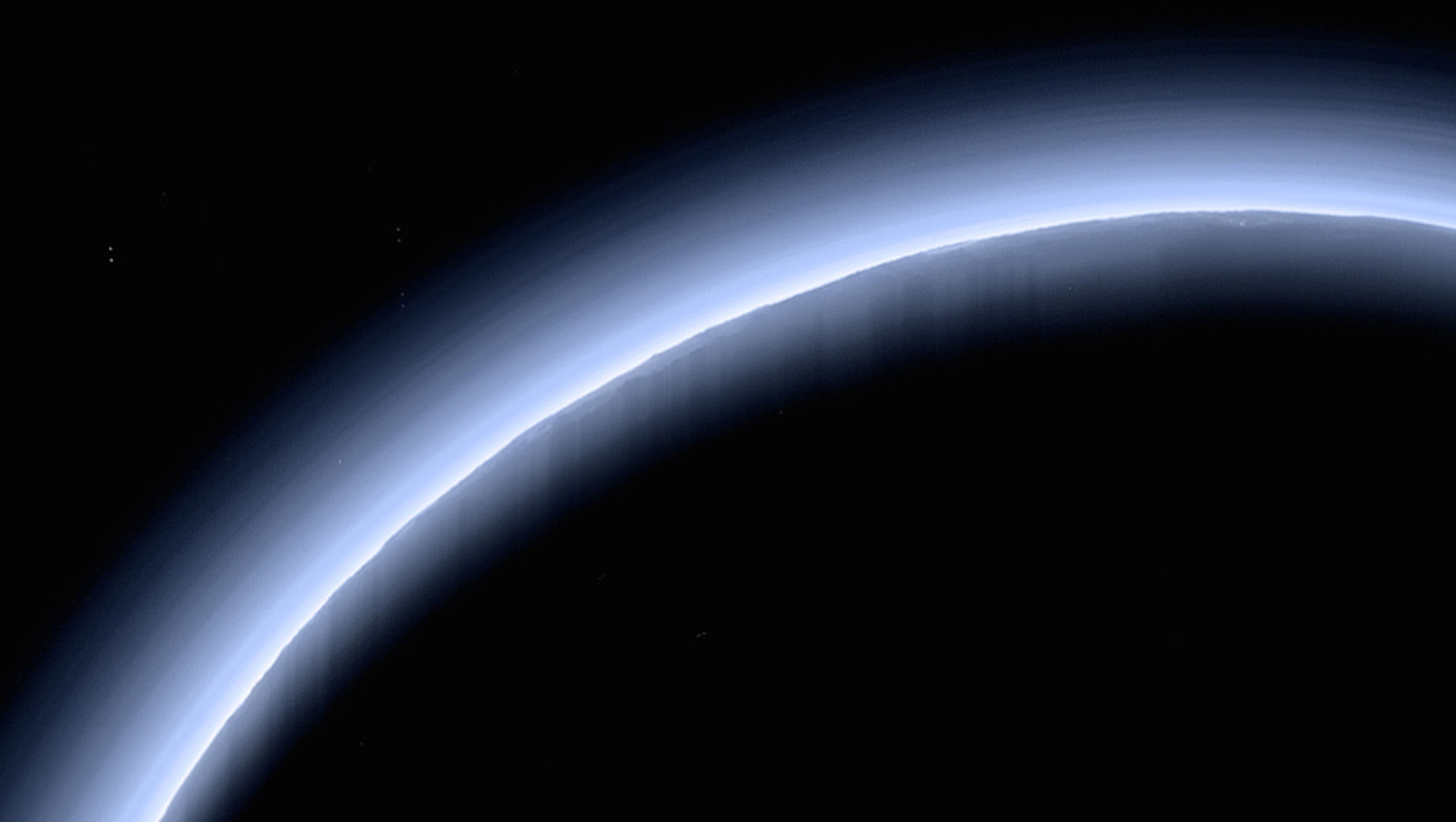Create a free profile to get unlimited access to exclusive videos, sweepstakes, and more!
What’s that trippy haze on Pluto?

Pluto is already a bizarre world, and as if there aren’t enough mysteries surrounding this ex-planet, there is something very hazy about it.
The haze surrounding this frozen planet looks otherworldly in images from NASA’s New Horizons spacecraft. Flyby data from New Horizons revealed this strange phenomenon that scientists are attempting to elucidate. Does it come from the surface or the cosmos? Is it water like the haze on Neptune's glacial moon Triton? Something completely alien? Now NASA JPL planetary scientist Bonnie Buratti and colleagues have been trying to (literally and otherwise) see through the shroud.
“It’s surprising that Pluto has this fabulous haze later,” Burratti recently said at the 235th meeting of the American Astronomical Society in Honolulu, according to Space.com. “We talk about Pluto being a new Mars, but it looks like it might be the new Titan as well," Buratti said.
What Burratti and her colleagues know about Triton and Saturn’s largest moon, Titan, could help clear at least some things up. Triton’s haze is made of water ice. Titan has eerily similar features to Earth — just made out of substances that most life-forms here couldn’t survive in. Its lakes and seas are liquid methane and ethane that constantly rains down from its own hazy sky. Dunes on Titan are made out of organic substances that may appear like sand but could be a hint at what is going on above Pluto. If organics are raining down from Titan’s sky and forming dunes, the same thing could be going on with the dunes of ice on Pluto.
"The basic thing we're trying to do is make the connection between the haze and the surface," Buratti said at the conference.
The suspicion is that, just like on Titan, organics are also falling out of that atmospheric haze on Pluto and creating its unreal glaciers and dunes. The pinkish tinge of the haze already reveals that there are organic substances floating around in there.
New Horizons first caught sight of Pluto’s haze by capturing sunlight in the atmosphere through its Long Range Reconnaissance Orbiter (LORRI). It was the sun that revealed two distinct layers of haze, the highest about 50 miles above the surface and the lowest hovering just 30 miles above the icy landscape.
Models created digitally by Buratti and others have given astronomers a hazy idea of what could be going on. Methane, a simple hydrocarbon found in Titan’s atmosphere, is also found in Pluto’s. What the models suggested is that methane gas particles being broken up by utltraviolet sunlight result in a haze when that methane breakdown causes more complex hydrocarbon gases, like ethylene and acetylene, to build up in the atmosphere. It used to be assumed that temperatures at 20 miles or more above Pluto’s surface would be too warm for these molecules to accumulate into a haze, but the orb that may or may not be a planet has defied that. The haze actually keeps Pluto cold, with an average temperature of -390 degrees Fahrenheit.
“The hazes detected…are a key element in creating the complex hydrocarbon compounds that give Pluto’s surface its reddish hue,” said New Horizons co-investigator Michael Summers, who was not involved in Buratti’s study.
What the stuff around Pluto actually is remains unclear. Titan might help tell us when NASA’s Dragonfly quadcopter touches down on the Saturnian moon in 2034.


























